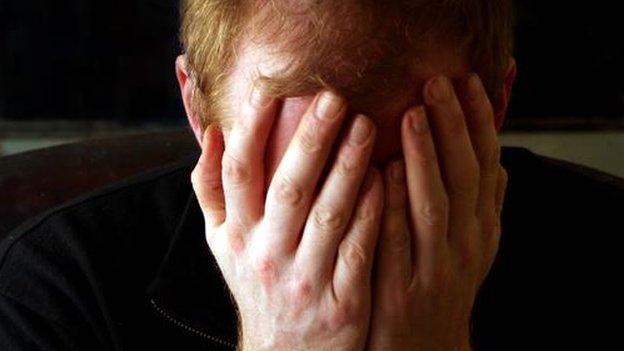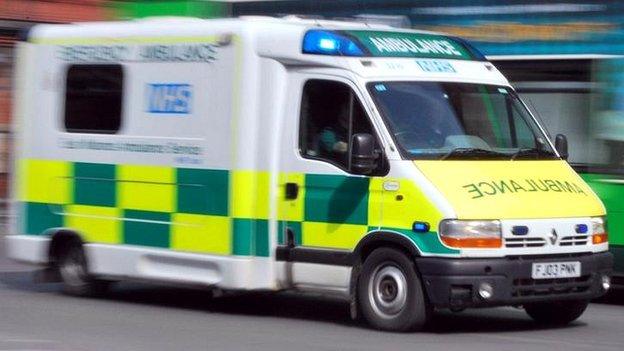Student suicide figures increase
- Published

Student suicides have risen to their highest level since at least 2007, according to figures from the Office for National Statistics.
These figures - for 2014 - show 130 suicides in England and Wales among full-time students aged 18 or above.
There were 100 deaths by suicide among students in the previous year, with the figures covering all the UK.
It follows warnings last week that half of ambulance call-outs to a university were for self-harm or suicide attempts.
The suicide figures, published by the ONS, external, show there were 97 deaths by suicide for male students and 33 female students in 2014.
The previous highest figure was 127 in 2010, in England and Wales. ONS figures have recorded student suicides since 2007, when there were 75.
But across the whole age range of the population, young people have the lowest suicide rate. And ONS figures for the UK show that across all ages, for men and women, the suicide rates in 2014 were lower than in 2004, 1994 and 1984, external.
There has been much concern about whether universities are providing sufficient counselling and advice for students with mental health problems.

University of York data revealed ambulance call outs for self harming and suicide attempts
The University of York highlighted the rise in demand for mental health services by publishing data from ambulance call-outs to the university.
It showed that this year, up until the first week in February, 12 call-outs were for incidents of self harm or suicide attempts, representing 50% of ambulance emergencies at the university.
In the previous full calendar year, there were 134 such call-outs to the university, with suicide attempts or self-harm accounting for 32%.
The report from York's student mental ill-health task group concluded that the "prevalence and severity" of problems were getting worse.
It included evidence from more than 50 universities which had found a "noticeable increase in complex mental health crises" in 2015 compared with 2014.
And in almost 90% of universities, staff reported working on such incidents with either the police or a coroner during 2015.

The overall downward trend in suicides for all age groups since 1981 Source: ONS
York's vice-chancellor, Koen Lamberts, said the report had highlighted a "growing issue, not just for universities but for society as a whole".
"Rates of mental ill-health are increasing," said Prof Lamberts.
"We wanted our staff and students to feel able to talk about what that means for the university."
The university says it wants to improve the services available, such as more support for "first contact" staff responding to a crisis and a more coordinated approach with local NHS services.
Among the problems highlighted as a growing source of stress was the constant pressures of social media and the threat of cyberbullying and victimisation.
The report said students could feel under pressure to succeed at everything and experienced feelings of "low self-esteem, depression, anxiety and hopelessness" when things went wrong.
And there are problems related to young people being away from home for the first time, relationship worries and anxiety over money.
Last week was mental health awareness week and many universities highlighted the advisers and counselling services on offer to students.
Sir Anthony Seldon, vice-chancellor of Buckingham University, has been a prominent campaigner for universities to take a more active role in promoting the well-being of students.
He said more effort needs to be put into prevention, promoting the importance of emotional resilience and a healthier lifestyle.
"We need much greater candour about mental health problems, and universities can lead the way," he said.
- Published17 May 2016